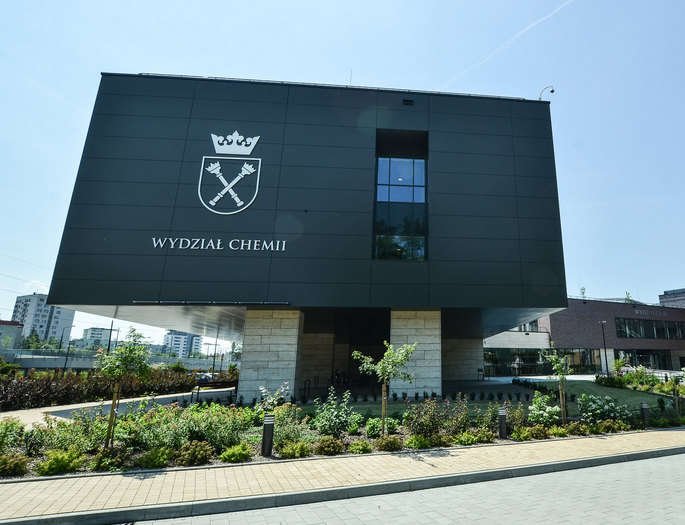
On 15 November 2023 the article ‘Computational prediction of complex cationic rearrangement outcomes’ was published in the prestigious international journal Nature. The paper devoted to the use of pioneering artificial intelligence methods in predicting chemical reaction mechanisms and outcomes was co-authored by Dr Sebastian Baś from the Jagiellonian University Institute of Chemistry.
The achievements in the field of artificial intelligence and neural network introduction into modern organic chemistry have revolutionized the attitude to the synthesis of complex organic molecules, like potential drugs and natural compounds. However, the methods developed so far are based on already available methods and knowledge developed by humans. Computer methods typically operate on full, literature-described reactions and are unable to develop novel approaches based on chemistry knowledge and reaction mechanisms. The published work is pioneering in terms of chemical rules understanding by artificial intelligence, which, based on a comprehensive database of physicochemical rules, quantum mechanics and kinetic calculations, can predict the chemical structure of potential reaction products. The described HopCat algorithm, an integral part of AllChemy software created and developed by Prof. Bartosz Grzybowski’s group, predicts the chemical structures expected from one of the most complex organic transformations - carbocation rearrangements. These rearrangements often significantly change the three-dimensional structure of the molecule, in a non-obvious and intricate way that predicting the final results poses a challenge even to experienced chemists. Within a few minutes, the created algorithm of Allchemy software can propose networks of possible mechanistic steps of the reaction, trace plausible step sequences, and calculate expected product distributions.
The reliability of the results obtained from the new extension of the AllChemy software was verified by an international team of scientists from the Faculty of Chemistry of the Jagiellonian University, Institute of Organic Chemistry of the Polish Academy of Sciences, University of Illinois at Urbana-Champaign and University of Basel, under the supervision of Prof. Grzybowski’s company - AllChemy. The aim of the research conducted at the Faculty of Chemistry JU was to verify the correctness of the software prediction with experimentally observed results from the rearrangement of carbocations obtained from natural terpenes such as linalool (present in tea) and fenchol (an ingredient of perfume).
The programme was not only able to explain the product distribution and provide proper mechanistic networks for observed rearrangements but also correctly predicted the temperature effect on the product's percentage content. The AllChemy algorithm identifies some additional products not reported in prior studies and allows for analytical data verification obtained from dedicated software in order to eliminate incorrectly assigned structures of the detected compounds, which was also confirmed experimentally.
For more details, visit the AllChemy software website: https://allchemy.net/






